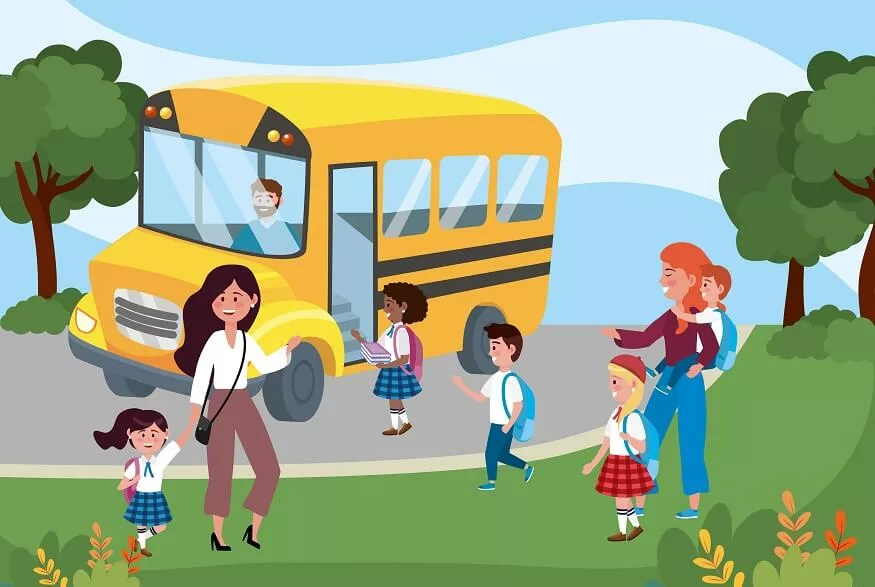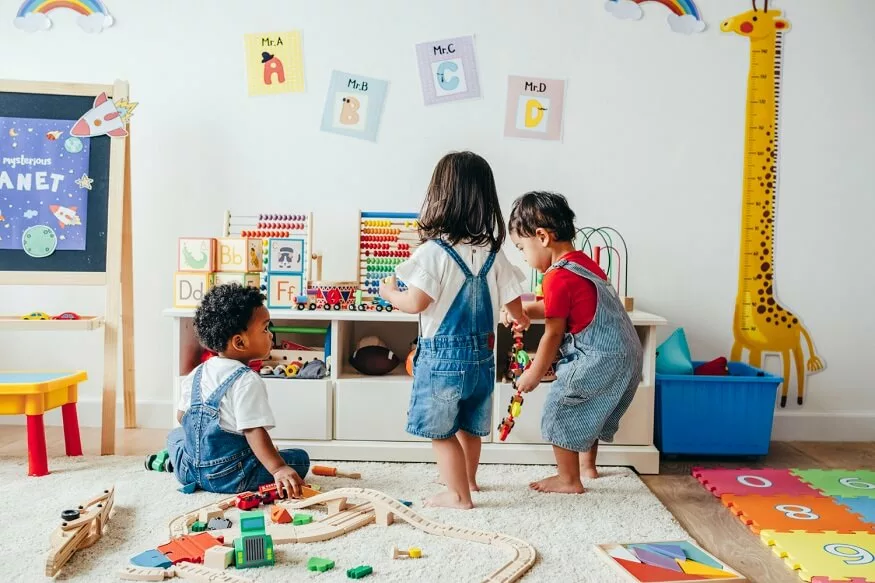School trips, whether to the local museum or a nature reserve farther aSchool, are exciting and educational opportunities for students. While these adventures outside the classroom bring many benefits, they also come with their own set of challenges and potential dangers. To ensure that students have a memorable and safe experience, both teachers and parents must be vigilant about school trip safety.
Also Read: Bicycle Safety Tips for Kids
Safety precautions for School trips
Here are essential safety tips that students should follow during school excursions.
- Understand the Importance of School Trip Safety
- Safety for the Youngest: School Trip Safety for Preschoolers
- School Trip Rules for Elementary Students
- School Trip Safety Checklist
- Safety Precautions for School Trips
School trip safety is paramount. It’s not merely about avoiding accidents but also about ensuring that every child gets the most out of the experience without distractions or fear. Students should be encouraged to always stay alert, listen to their teachers, and understand that while a trip is fun, there are risks involved. Knowing this will help them take safety precautions seriously.
Preschoolers are curious, energetic, and can be unpredictable. When planning a trip involving these little explorers:
Close Supervision: Ensure that the teacher-to-student ratio is low. Having more adults per child ensures better supervision.
Buddy System: Pair them up with a classmate. It’s easier to keep track of pairs than individual children.
Visible Identification: Use wristbands or name tags with the school’s contact information.
Elementary students are more independent than preschoolers, but they still require clear guidelines during trips.
Stay with the Group: Emphasise the importance of staying with the group. Wandering off can not only be unsafe but can also disrupt the trip for everyone.
Listen to the Guide/Teacher: Whether it’s a museum guide or a teacher, students should understand the importance of listening to instructions.
Avoid Touching Displays: Many sites have exhibits that shouldn’t be touched. Ensure students understand and respect these rules.
Before embarking on the trip, teachers and trip organisers should have a comprehensive school trip safety checklist. Here are some items to consider:
Emergency Contact Information: Ensure that you have the emergency contact information for every student. This should be easily accessible throughout the trip.
First Aid Kit: Always carry a basic first aid kit. It’s essential for treating minor injuries.
Headcounts: Regularly count the students, especially when transitioning from one location to another.
Pre-Trip Briefing: Before the trip, explain the itinerary, behavioural expectations, and safety precautions to the students.
To further ensure the safety of students during school trips, here are some additional safety precautions for school trips to keep in mind:
Dress Appropriately: Depending on the nature of the trip, students might need protective gear, sun hats, comfortable shoes, or raincoats. Always check the weather forecast and ensure students are dressed accordingly.
Stay Hydrated and Fed: Ensure students have access to water and snacks. This is particularly important for trips that involve a lot of walking or outdoor activities.
Know the Location: Teachers and organisers should familiarise themselves with the trip location. Knowing the layout, emergency exits, and potential hazards can help in better supervision.
Use Safe Transportation: If the trip requires a bus or other transportation, ensure that the vehicle is in good condition, and the driver has a sound safety record.
Also Read: Animal Safety for Kids: How to Approach or Avoid Animals
School Trip Safety Checklist
School trips are both fun and educational for students, allowing them to experience learning in a new environment. To ensure these trips are not only enjoyable but also safe, it’s crucial to be prepared. Here’s a comprehensive school trip safety checklist to guide educators and organisers:
- Pre-Trip Planning
- Transportation
- Communication
- Health and Well-being
- Supervision
- Behavioural Expectations
- Gear and Equipment
- During the Trip
Destination Research: Understand the location’s safety protocols, restrictions, and layout.
Weather Forecast: Check the weather for the day to ensure you’re prepared for any conditions.
Itinerary: Have a clear itinerary, including rest breaks and meal times, and share this with other supervisors and students.
Emergency Plans: Establish and communicate what to do in case of emergencies like severe weather or a lost student.
Vehicle Safety: If hiring a bus or coach, ensure it’s in good condition and meets safety standards.
Driver Credentials: Ensure the driver has a valid license and a good safety record.
Student List: Have a list of all students travelling, and make sure another copy is left at the school.
Emergency Contact Information: Compile a list of emergency contacts for each student and keep it accessible.
Communication Devices: Carry mobile phones or walkie-talkies to communicate with other supervisors.
First Aid Kit: Always carry a well-equipped first aid kit and ensure at least one person is trained in basic first aid.
Medications: Have a list of students who take medications and ensure their meds are stored safely and administered as required.
Allergy Awareness: Be aware of any student allergies, especially food allergies if meals are involved.
Adult-to-Student Ratio: Ensure there are enough adults to supervise the students effectively. The exact ratio might vary based on the age group.
Buddy System: Especially useful for younger students, pairing them up can ensure they look out for each other.
Code of Conduct: Discuss behavioural expectations with students before the trip and ensure they understand the importance of following rules.
Appropriate Clothing: Depending on the trip’s nature, ensure students wear suitable clothing – be it protective gear, raincoats, or comfortable shoes.
Identification: Consider giving students ID cards or wristbands with emergency contact information.
Regular Headcounts: Frequently count students, especially when transitioning between places.
Stay Together: Emphasise the importance of staying with the group.
Designated Meeting Points: Establish specific locations to regroup in case anyone gets separated.
Post-Trip
Debrief: Once back, discuss the trip with the students. This is not only educational but can also highlight any safety concerns to be addressed in future trips.
Check-out System: If parents are picking up students post-trip, ensure a system is in place for safe handovers.
Also Read: 10 Safety Tips for taking your Kids on Vacation
This checklist, when followed, can significantly enhance the safety and success of a school trip. Every trip is unique, so always tailor the checklist to suit the specific requirements of your excursion.
Our EuroSchool trips are invaluable experiences for students. We offer first hand exposure to new environments, stimulate curiosity, and often make lessons learned in the classroom come alive.










